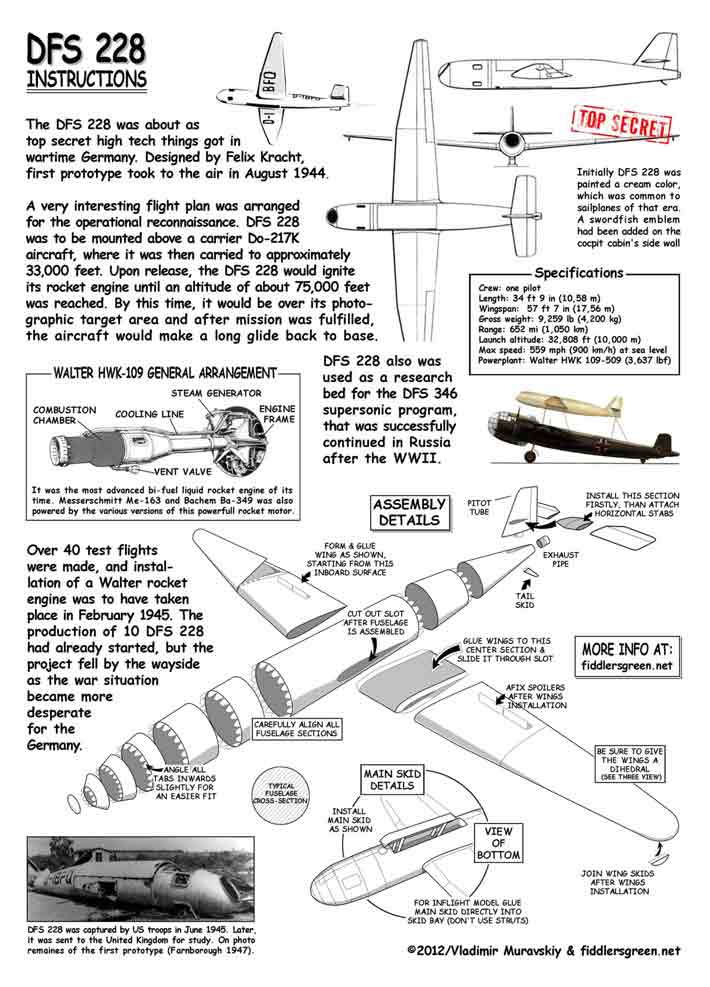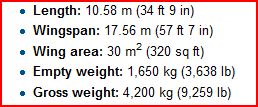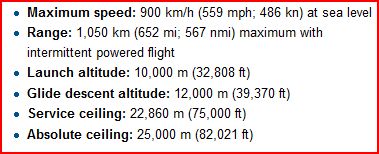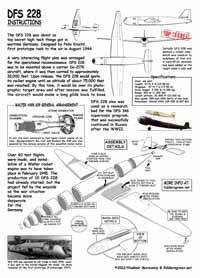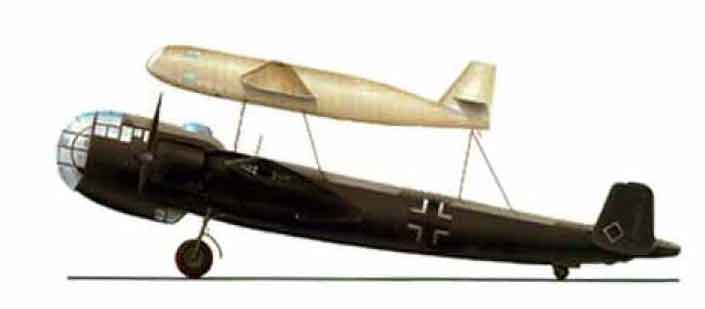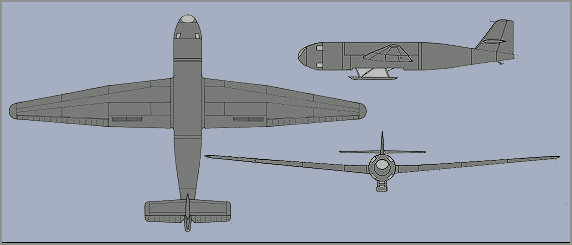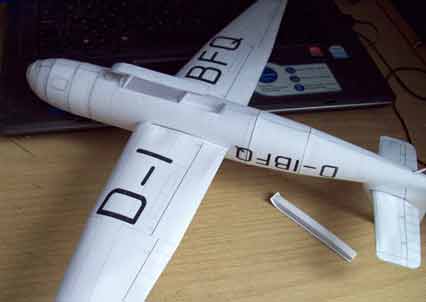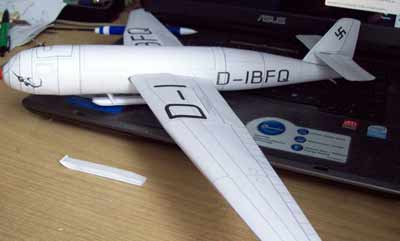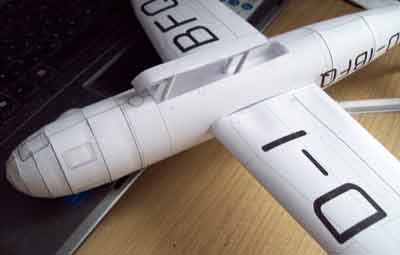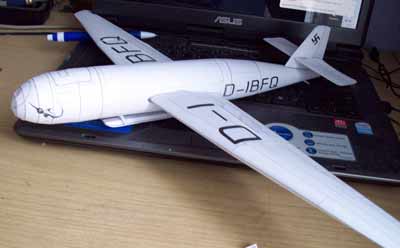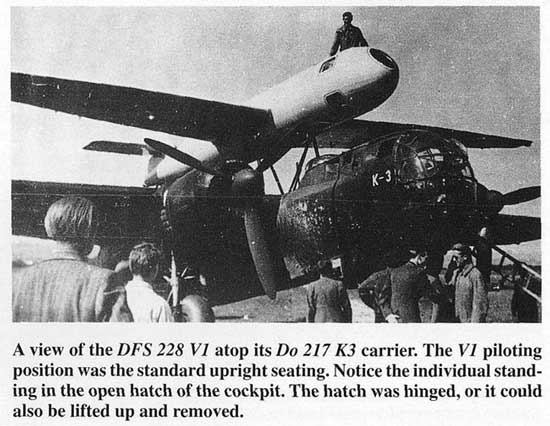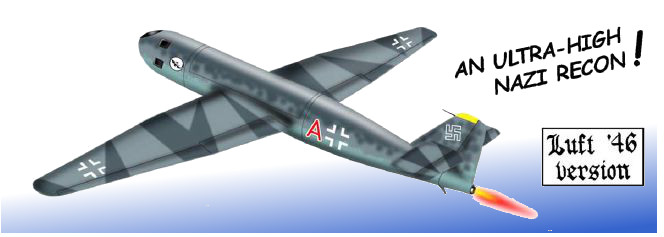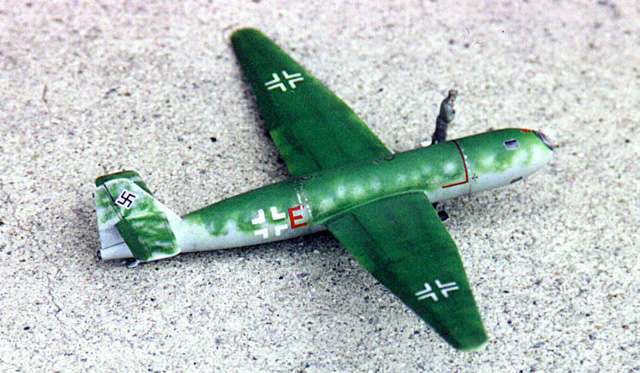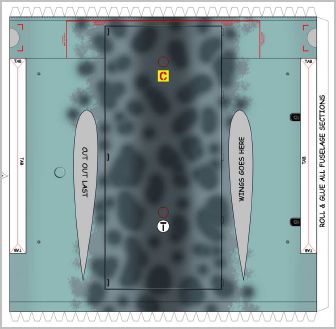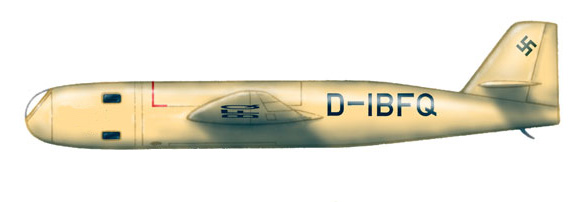A Rocket-Powered Sailplane made out of Wood?
Yep. Well at least the wing was made out of wood. There was one long spar going from wingtip to wingtip, and the wooden ribs on the spar were covered with plywood. They tried to make the pressurized pilot compartment out of wood too, but that didn't work out so well.
This thing would ride on the back of a Dornier Do 217K V-3 carrier aircraft up to about 33,000 feet and then Blast off using an A-2 rocket engine up to 80,000 feet. After that, it would just glide silently down through the clouds taking pictures of sheep and, uhm...other things.
High Altitude Recon Rocket Glider - The DFS 228 V1
"The DFS 228 bi-fuel liquid rocket propelled sailplane was about as high tech as things got in wartime Germany. Its high technology didn't come from its HWK509D bi-fuel liquid rocket engine. No. It came through the mechanism Felix Kracht and Eberhard Meyer designed to protect the DFS 228's pilot should he have to leave the flying machine at any height between 25,000 feet and 100,000 feet in altitude. The world's aviation community hadn't yet invented the pressure suit. In those days, almost sixty years ago, any pilot who had the misfortune to bail out of his ultra high-flying machine, would freeze to death in the sub-zero Fahrenheit temperature while attempting to parachute down to a more human-friendly lower and warmer altitude. It had happened on 6 August at the 1938 Summer Sailplane competitions at the Rhoen/Wasserkuppe. Werner Blech froze to death after his all-wing Horten Ho 3c sailplane was carried up to 26.000 feet in altitude and was destroyed by orange-size hailstones. Apparently Blech was thrown out and quick froze on his way back down to earth. His companion Heinz Scheidhauer was pulled up, too, in his Horten Ho 3a, but managed to live although suffering severe frostbite. Felix Kracht and his colleagues at DFS set out on a mission to prevent the needless loss of life. Kraclzf declared that he'd develop a detachable pressurized cockpit cabin for his soaring friends so that the tragedy at the 1938 Rhön/Wasserkuppe would never happen again.
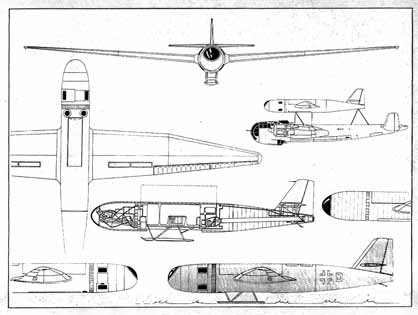
One year later ( 1939) Kracht designed at built the DFS 54, the world's first sailplane with a detachable pressurized cockpit cabin, It was about 80% completed when Germany invaded Poland and all "non-essential" aircraft projects were put on stop-hold basis. In the early 1940s, the RLM requested that DFS look into the design and construction of a prototype high altitude reconnaissance aircraft powered by a single HWK 509D bi-fuel liquid rocket engine. This wooden prototype came to be known as the DFS 228. Really, it was a liquid rocket-powered sailplane capable of reaching 100,000 feet. Kracht and his colleagues, with their memories of Blech and Scheidhauer, went back to their unfinished DFS 54. All they needed was the detachable pressurized cabin cockpit to make it all work. DFS would mate the detachable cockpit with a wooden sailplane design featuring a wing aspect ratio of 10 and powered by an off the shelf HWK509B-l bi-fuel liquid rocket engine with modifications and known as the 509D. This is the story of the DFS 228, an ultra high altitude photo reconnaissance machine and inspired by designers from DFS who never forgot the August sailplane soaring disaster at the 1938 Summer Rhoen/Wasserkuppe Sailplane Competitions. In the memory of Wenzer Blech and Heniz Scheidhauer, never again would any pilot have to take any aircraft up to ultra high altitudes without the equipment to allow them the assurance to survive should they have to leave the aircraft for any reason at all."
